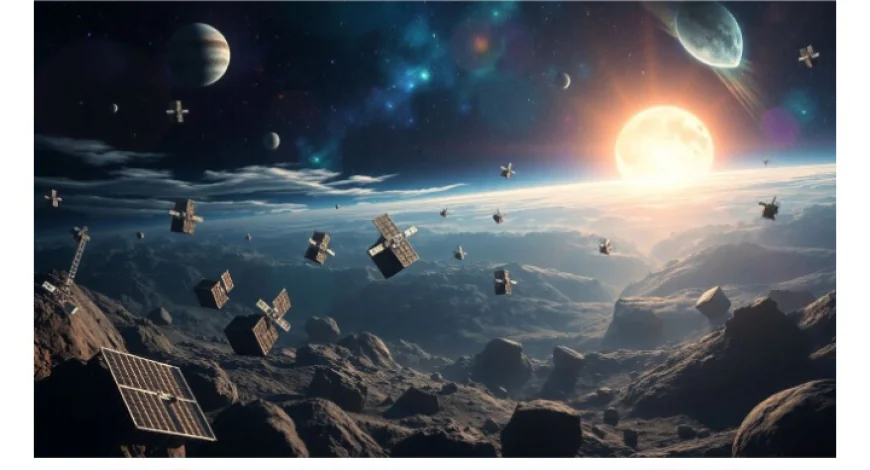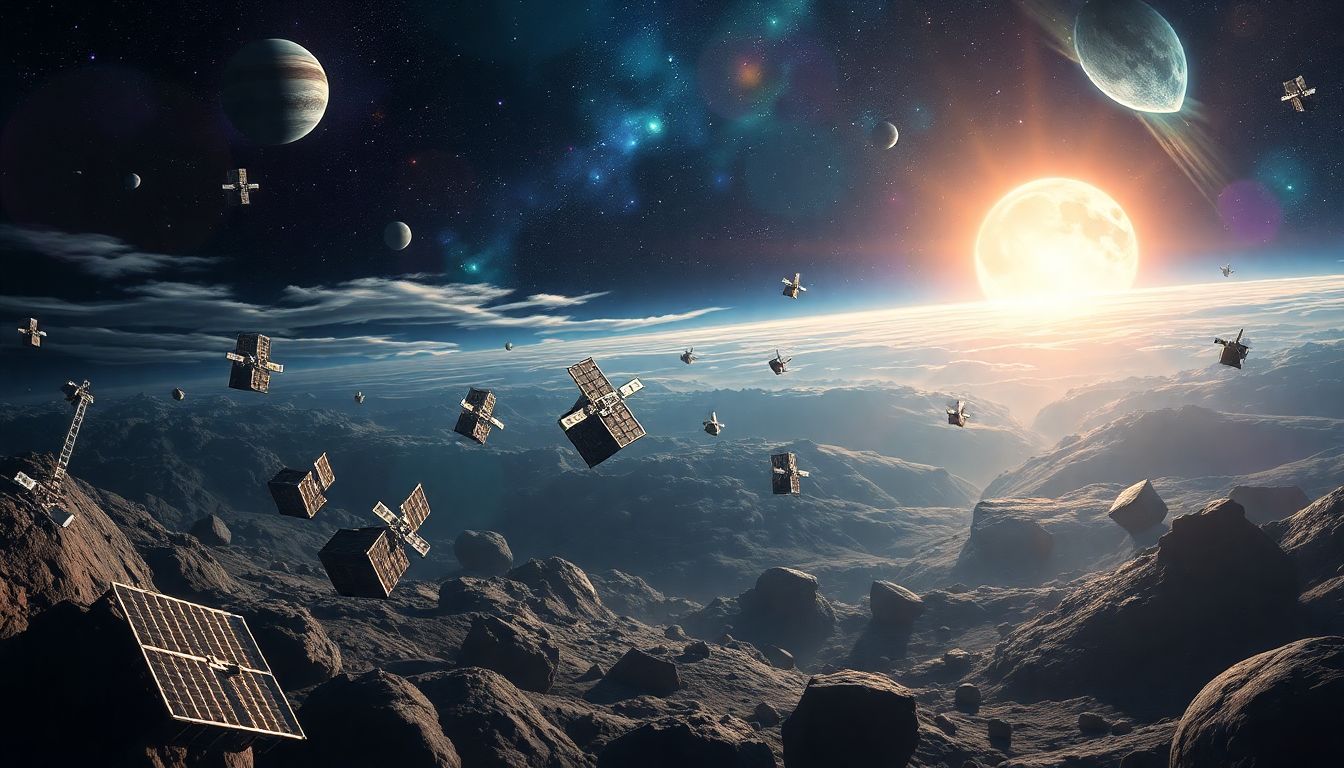Where Do Satellites Go When They Die? The Ultimate Guide to Satellite Decommissioning and Disposal
Every year, hundreds of new satellites launch into space. These machines help us communicate, forecast weather, and find our way around. But as more satellites fill the sky, a new problem arises: what happens when they break or reach the end of their useful life? Satellites don’t last forever, and when they die, they become part of the growing cloud of space debris. This debris poses serious risks to active satellites and even astronauts in space. Understanding where satellites go when they die is key to keeping space safe and clean.


Where Do Satellites Go When They Die? The Ultimate Guide to Satellite Decommissioning and Disposal
Introduction
Every year, hundreds of new satellites launch into space. These machines help us communicate, forecast weather, and find our way around. But as more satellites fill the sky, a new problem arises: what happens when they break or reach the end of their useful life? Satellites don’t last forever, and when they die, they become part of the growing cloud of space debris. This debris poses serious risks to active satellites and even astronauts in space. Understanding where satellites go when they die is key to keeping space safe and clean.
What Happens to Satellites During Their Operational Life
The Lifecycle of a Satellite
Satellites are complex gadgets built for specific jobs. They start on the ground, are launched into space, and then begin their work orbiting Earth. Depending on their purpose, they can work for a few years or many decades. Communication satellites in geostationary orbit often last about 15 years, while weather satellites might last around 5 to 10 years. GPS satellites may stay in orbit for even longer, sometimes over 20 years. Over time, they face harsh conditions like radiation and extreme temperatures, which can cause damage.
Satellite End-of-Life Planning
Before a satellite even launches, engineers plan how to handle it once it's done working. They need to decide whether to bring it down or move it elsewhere. Regulations from countries and international treaties guide these plans. These rules help avoid cluttering space and protect future missions. Many companies and space agencies now include end-of-life plans for their satellites to prevent adding more debris.
Transition to Decommissioning
When a satellite reaches its final days, it’s gradually shut down. The onboard systems are turned off, and it stops functioning. This is called decommissioning. Sometimes, the satellite is left in its current orbit, waiting for its final fate. Other times, it’s carefully prepared to re-enter Earth’s atmosphere and burn up, cleaning up space clutter.
Common Disposal Methods for Satellites
Spacecraft Deorbiting
One popular way to get rid of dead satellites is controlled deorbiting. This method uses the satellite’s thrusters or onboard systems to slow it down, making it fall back into Earth’s atmosphere. When it reenters, most of the satellite burns up due to intense heat. NASA and other space agencies have successfully used controlled reentry for satellites to avoid debris scattering. Special technologies like small engines or drag sails help guide these machines safely back to Earth.
Space Debris and Orbital Decay
Not all satellites are intentionally brought down. Some fall naturally. This process is called orbital decay. Earth’s atmosphere creates drag that slowly pulls satellites closer over time. Smaller satellites in low Earth orbit (LEO) typically fall back within a few years, while larger ones may take decades. For example, the International Space Station debris or old rocket stages often burn up during reentry, but some parts can survive and reach the ground.
Graveyard Orbits
When satellites reach the end of their life in certain orbits, they can be moved to ‘graveyard’ orbits. These are specially chosen spots far away from active satellites. Geostationary satellites, which stay above the same place on Earth, are often shifted to a higher orbit called a GEO graveyard orbit. Here, they sit quietly, out of the way, reducing the risk of creating debris in active zones.
Challenges in Satellite Disposal
Increasing Space Debris
The number of objects in space keeps rising. According to recent studies, over 23,000 pieces larger than 10 centimeters float around Earth, and millions more are tiny fragments. This clutter makes space navigation dangerous. Collisions could damage or destroy working satellites and even harm astronauts aboard spacecraft. The risk is getting worse as launches increase.
Technical Limitations
Controlling the end-of-life process is not always simple. Sometimes, satellites lose control or their thrusters fail, making it impossible to steer or deorbit them. Current technology also limits the ability to quickly move large or distant satellites. This means some derelict machines stay in space longer than they should, adding to the debris pile.
International Coordination and Regulations
No single country manages space debris alone. Countries work together through treaties and agreements, but enforcing rules is tricky. The Outer Space Treaty, signed by many nations, encourages responsible space activities. Still, many agencies believe more standardized procedures are needed to prevent space from becoming too crowded.
Innovative Solutions and Future Outlook
Active Debris Removal Technologies
Scientists and engineers are trying to clean up space with new tools. Some projects use robotic arms or nets to grab debris. Others use harpoons to push trash toward Earth, where it will burn up. The European Space Agency’s ClearSpace-1 mission aims to catch and remove a large piece of space junk. These efforts are still in testing but show promise for making space safer.
Satellite Design for End-of-Life
Designing satellites to help with disposal is another promising trend. Engineers now create machines with built-in features to deorbit or break apart more easily. For example, some satellites have sails that catch the thin atmosphere, speeding their descent. Making future satellites more recycling-friendly can help cut down space waste.
Policy and International Collaboration
Governments and agencies around the world are working together to improve space disposal. They are pushing for clearer rules on deorbiting and debris mitigation. International groups like the United Nations encourage cooperation to make space cleaner. Strong policies and teamwork are vital to ensuring a sustainable space environment.
Key Takeaways
Satellites are typically decommissioned in three main ways: controlled reentry, natural orbital decay, or shifting to graveyard orbits. Responsible end-of-life processes are crucial because space debris keeps growing and threatens future missions. Innovations in technology and stricter policies are necessary to keep space safe and clean for generations to come.
Conclusion
As we rely more on space tech, understanding what happens when satellites die becomes essential. Proper disposal methods like reentry or graveyard orbits help prevent dangerous clutter. With continued innovation and international cooperation, we can better manage satellite ends-of-life and keep space a safe place for everyone. Responsible actions today ensure a cleaner, safer space tomorrow.
References and Further Reading
- NASA Orbital Debris Program Office: https://orbitaldebris.jsc.nasa.gov
- European Space Agency’s ClearSpace-1 Mission: https://www.esa.int
- United Nations Office for Outer Space Affairs: https://www.unoosa.org
- International Telecommunication Union (ITU) Satellite Regulations: https://www.itu.int



 VARSHITHA
VARSHITHA